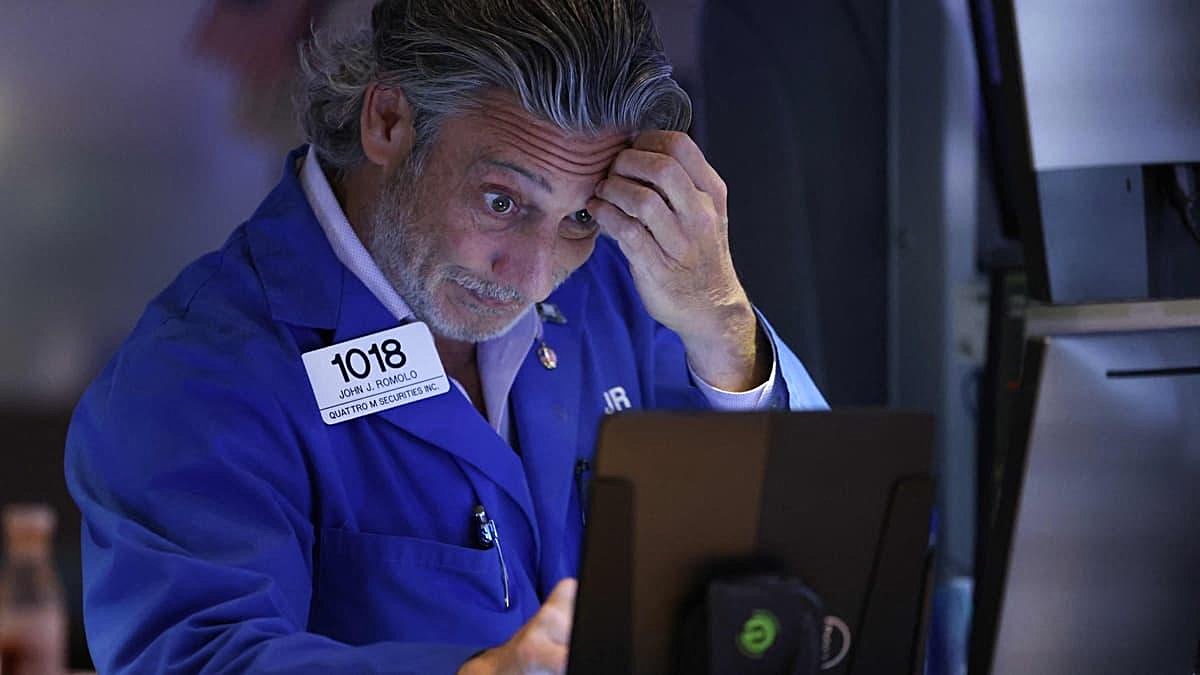The Dow Jones Industrial Average experienced initial gains on Wednesday before turning negative by midday. This decline comes just two days after a significant loss of over 1,000 points fueled concerns of a potential U.S. recession.
As the trading day concluded, the Dow dropped 234 points, while the Nasdaq Composite fell by 171 points or 1 percent. The S&P 500 Index also suffered a loss of 40 points.
Yesterday, the three major U.S. stock indexes managed to recover some of their previous losses. The Dow Jones increased by 294 points or 0.8 percent, the S&P 500 rose by 1 percent, and the Nasdaq Composite gained 1 percent.
Japans Nikkei 225 also rebounded on Tuesday, surging by 10.2 percent after experiencing a 12.4 percent drop the day before. This plunge marked the worst performance for the index since the Black Monday crash of 1987. Tokyo stocks recovered as the value of the Japanese yen stabilized against the U.S. dollar, following several days of sharp appreciation.
Michael Landsberg, Chief Investment Officer at Landsberg Bennett Private Wealth Management, stressed the importance for investors to properly manage risk considering the volatility in the market. Landsberg emphasized that many investors have seen significant gains in tech stocks and cautioned that this volatility is likely to persist for some time.
Stronger-than-expected profit reports from various large U.S. companies contributed to the gains on Tuesday. Kenvue, the parent company of Tylenol and Band-Aids, saw a jump of 14.7 percent in its stock price after reporting higher-than-expected profits, partly attributable to increased product prices. Uber also experienced a surge of 10.9 percent in its stock price after comfortably surpassing profit forecasts for the latest quarter.
Caterpillar, the heavy machinery manufacturer, saw a rise of 3 percent in its stock price after reporting stronger earnings than anticipated.
Market participants now anxiously await further comments on monetary policy from officials at the U.S. central bank, scheduled for next week, leading up to the Jackson Hole event where Federal Reserve Chair, Jerome Powell, is expected to deliver a speech.
During the market decline on Monday, several Federal Reserve presidents aimed to reassure traders. Austan Goolsbee, President of the Federal Reserve Bank of Chicago, stated to CNBC that the central bank is committed to stabilizing the economy in case of a downturn. He reiterated that the Fed’s mandate is to maximize employment, stabilize prices, and maintain financial stability. Goolsbee affirmed that if there is a collective deterioration in any of these areas, the Fed is prepared to take appropriate corrective action.
San Francisco Fed President, Mary Daly, expressed her commitment to preventing a downturn in the U.S. labor market while indicating the likelihood of an interest rate cut. She emphasized that the extent and timing of policy adjustments will depend on incoming economic data. Daly stressed the importance of not letting the labor market slow down to the point of a downturn, as she stated at a forum in Hawaii on Monday.
A surprise rate hike by the Bank of Japan on July 31st caused global stock markets to plummet as investors unwound their carry trade positions due to a surge in the value of the low-yielding yen. However, on Wednesday, BOJ Deputy Governor Shinichi Uchida stated that the central bank will not raise rates during financial market instability, thereby pushing the value of the yen lower and boosting market sentiment.
Last week, the U.S. Department of Labor released its monthly report, indicating a lower than expected addition of 114,000 nonfarm payrolls in July. This report, combined with an increased unemployment rate of 4.3 percent, sparked a sell-off on August 2nd, which continued into Monday but was offset by Tuesday’s gains.
Discover more from Tension News
Subscribe to get the latest posts sent to your email.

